Abstract
OBJECTIVES: This study examined two major methadone treatment factors, visit frequency and methadone dose, posited to be important in reducing intravenous drug use and human immunodeficiency virus (HIV) transmission. METHODS: One hundred fifty opiate-dependent subjects randomly assigned to four groups received 50 or 80 mg of methadone and attended a clinic 2 or 5 days per week. RESULTS: Survival analysis indicated higher dropout rates for groups having five vs two visits per week (Chi2[1]=7.76). Higher proportions of opiate-positive results on urine screens were associated with lower methadone doses (F[1,91]=4.74). CONCLUSIONS: Receiving take-home doses early in treatment enhanced treatment retention. The 50-mg dose combined with five visits per week produced the worst outcome. Fewer visits enhanced retention at 50 mg, but opiate use rates were higher at this dose than they were for either 80-mg group. The HIV infection rate at entry was 9%. No subjects seroconverted during the study. Risk behaviors for acquired immunodeficiency syndrome declined over time regardless of group/dose assignment. These results have important implications for modification of regulatory and clinic policy changes.
Full text
PDF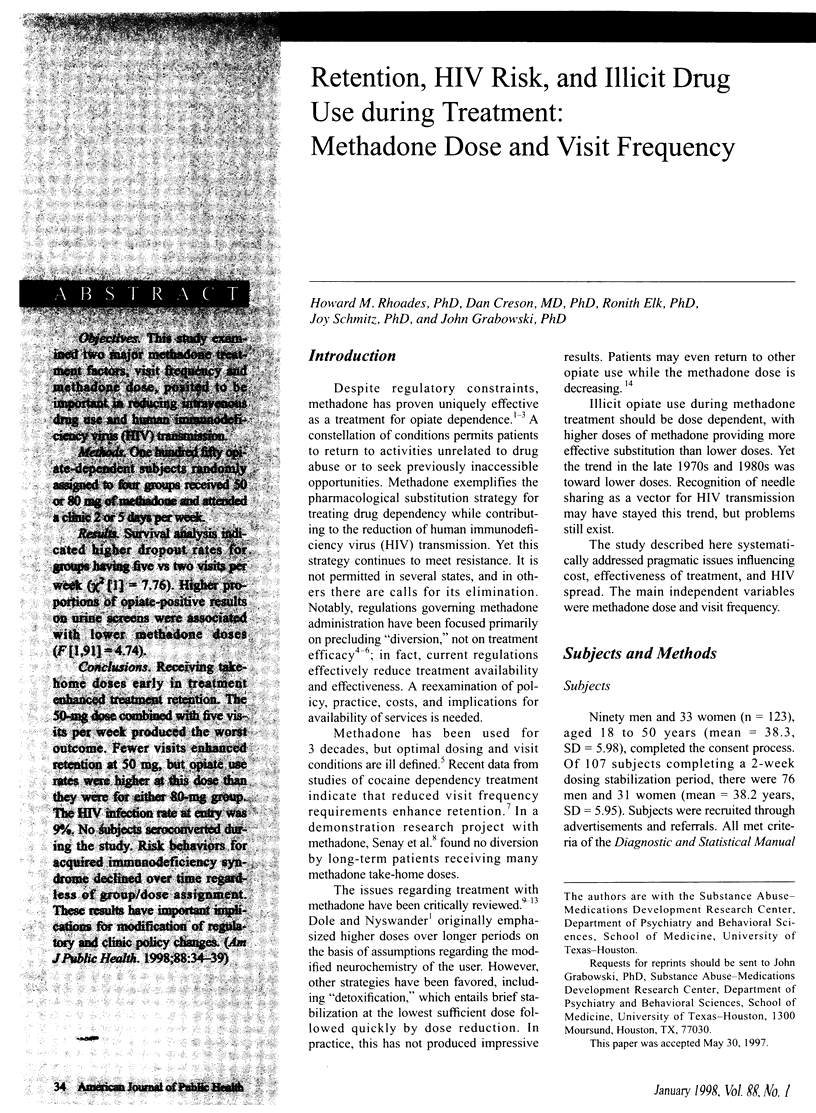
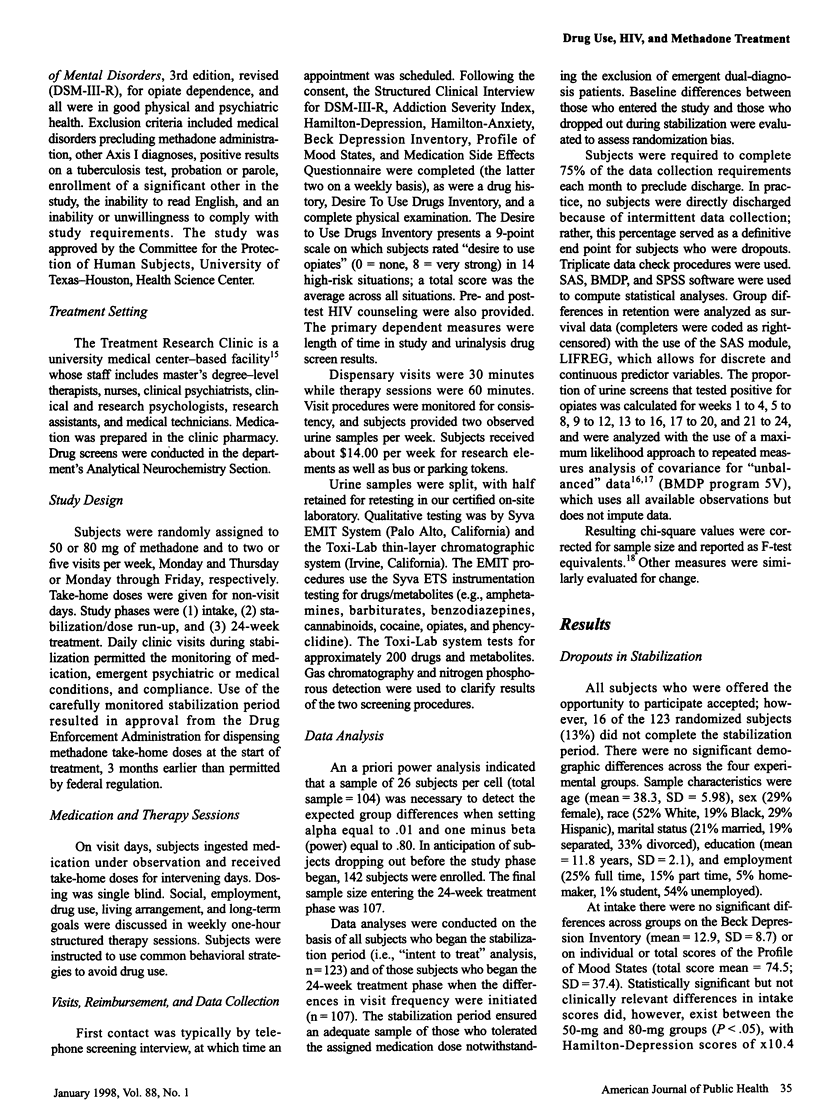
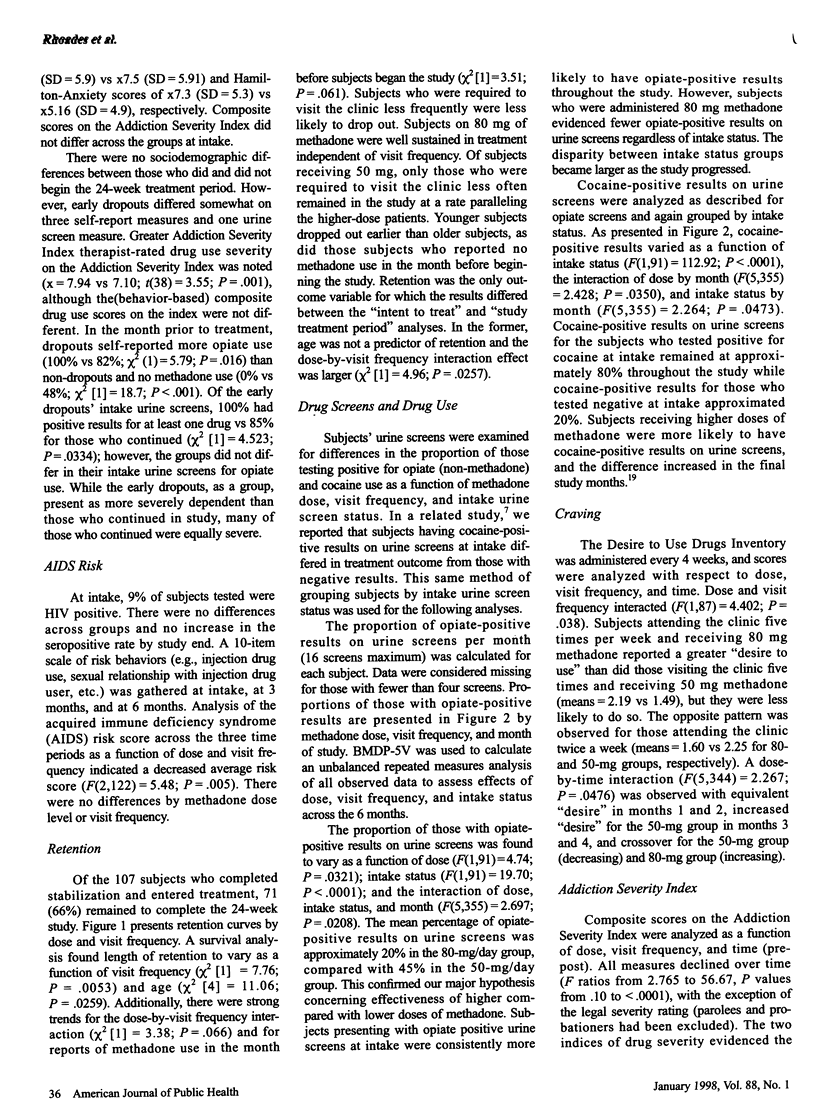
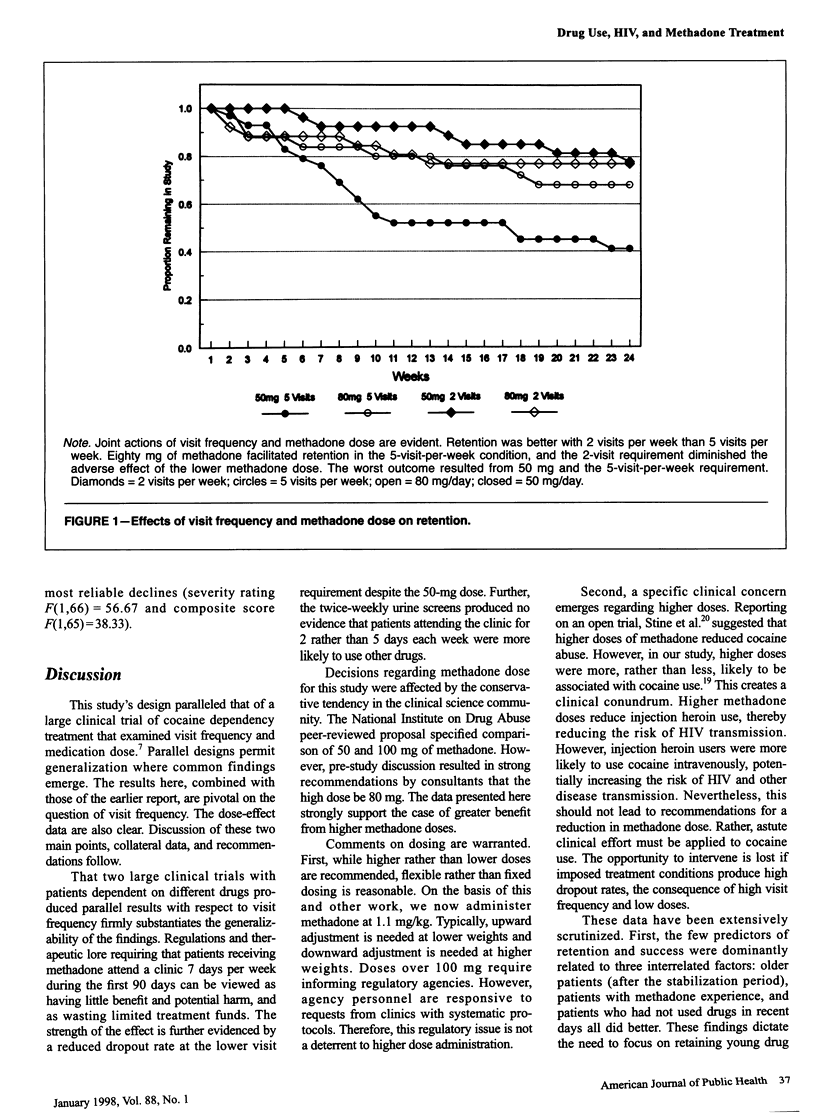
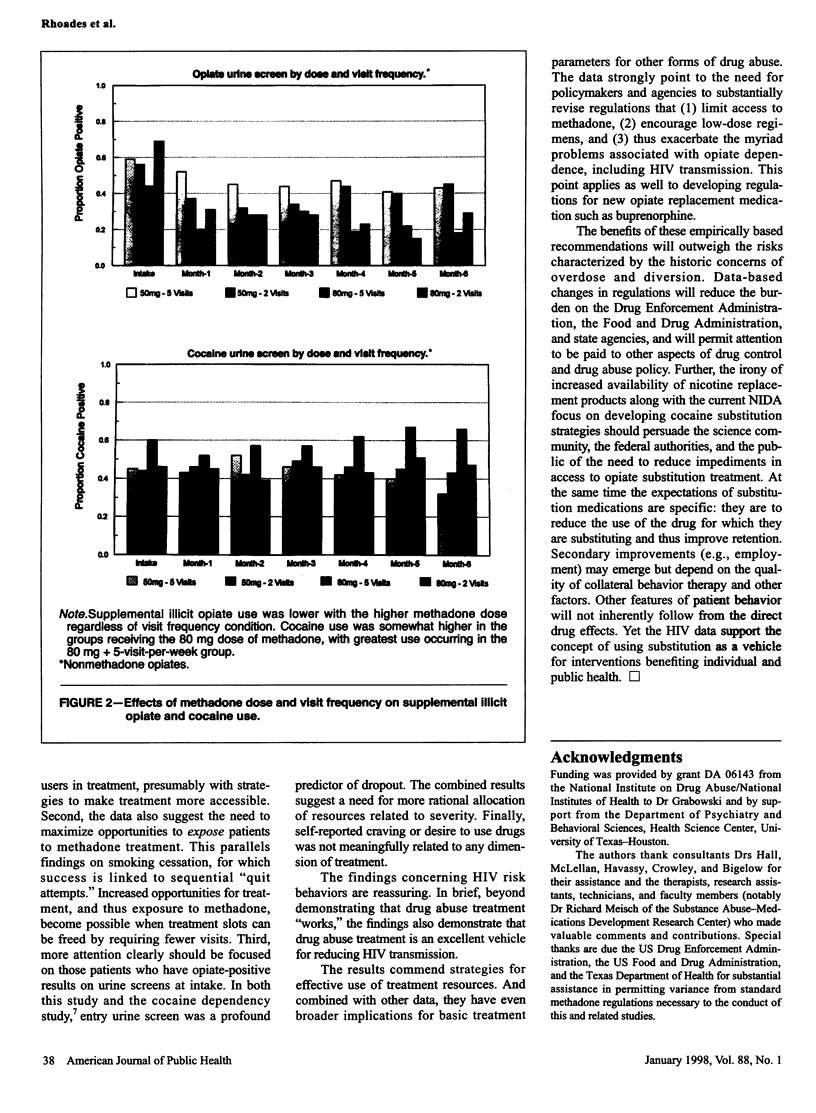
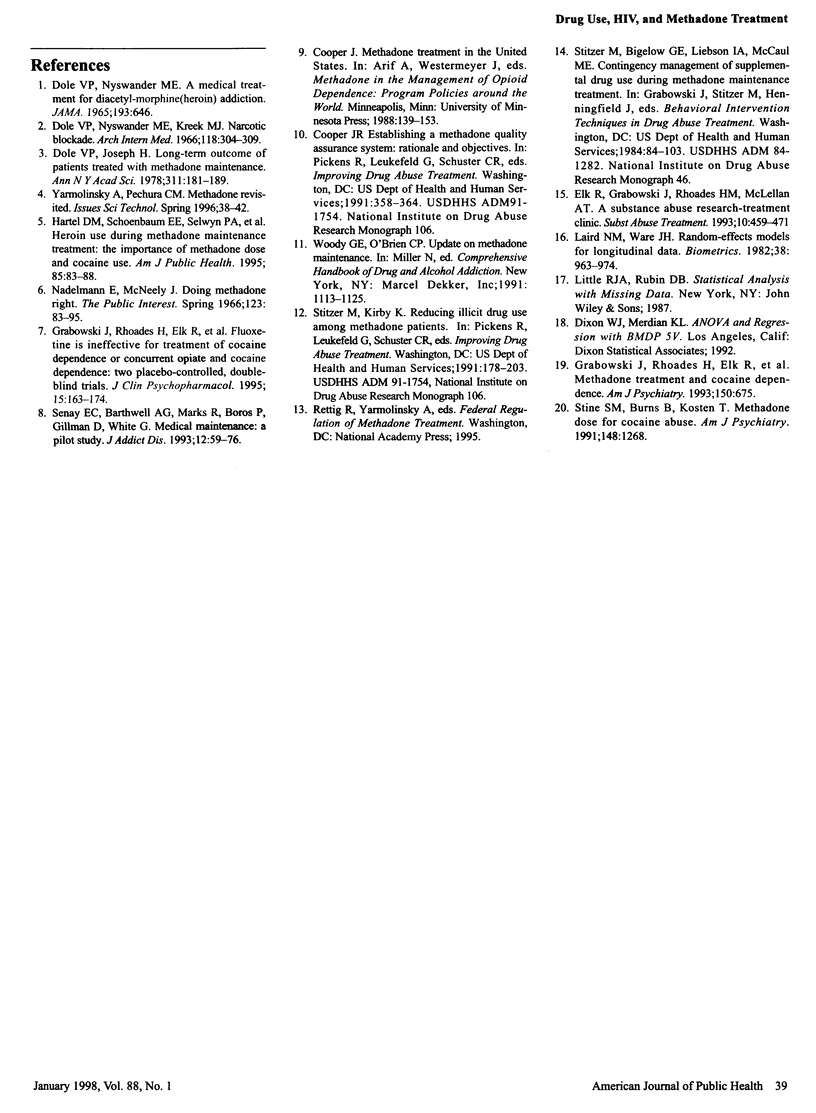
Selected References
These references are in PubMed. This may not be the complete list of references from this article.
- DOLE V. P., NYSWANDER M. A MEDICAL TREATMENT FOR DIACETYLMORPHINE (HEROIN) ADDICTION. A CLINICAL TRIAL WITH METHADONE HYDROCHLORIDE. JAMA. 1965 Aug 23;193:646–650. doi: 10.1001/jama.1965.03090080008002. [DOI] [PubMed] [Google Scholar]
- Dole V. P., Joseph H. Long-term outcome of patients treated with methadone maintenance. Ann N Y Acad Sci. 1978;311:181–189. doi: 10.1111/j.1749-6632.1978.tb16775.x. [DOI] [PubMed] [Google Scholar]
- Dole V. P., Nyswander M. E., Kreek M. J. Narcotic blockade. Arch Intern Med. 1966 Oct;118(4):304–309. [PubMed] [Google Scholar]
- Elk R., Grabowski J., Rhoades H., McLellan A. T. A substance-abuse research-treatment clinic: effective procedures and systems. J Subst Abuse Treat. 1993 Sep-Oct;10(5):459–471. doi: 10.1016/0740-5472(93)90007-o. [DOI] [PubMed] [Google Scholar]
- Grabowski J., Rhoades H., Elk R., Schmitz J., Creson D. Methadone dosage, cocaine and opiate abuse. Am J Psychiatry. 1993 Apr;150(4):675–675. doi: 10.1176/ajp.150.4.675a. [DOI] [PubMed] [Google Scholar]
- Grabowski J., Rhoades H., Elk R., Schmitz J., Davis C., Creson D., Kirby K. Fluoxetine is ineffective for treatment of cocaine dependence or concurrent opiate and cocaine dependence: two placebo-controlled double-blind trials. J Clin Psychopharmacol. 1995 Jun;15(3):163–174. doi: 10.1097/00004714-199506000-00004. [DOI] [PubMed] [Google Scholar]
- Hartel D. M., Schoenbaum E. E., Selwyn P. A., Kline J., Davenny K., Klein R. S., Friedland G. H. Heroin use during methadone maintenance treatment: the importance of methadone dose and cocaine use. Am J Public Health. 1995 Jan;85(1):83–88. doi: 10.2105/ajph.85.1.83. [DOI] [PMC free article] [PubMed] [Google Scholar]
- Laird N. M., Ware J. H. Random-effects models for longitudinal data. Biometrics. 1982 Dec;38(4):963–974. [PubMed] [Google Scholar]
- Senay E. C., Barthwell A. G., Marks R., Bokos P., Gillman D., White R. Medical maintenance: a pilot study. J Addict Dis. 1993;12(4):59–76. doi: 10.1300/J069v12n04_05. [DOI] [PubMed] [Google Scholar]
- Stine S. M., Burns B., Kosten T. Methadone dose for cocaine abuse. Am J Psychiatry. 1991 Sep;148(9):1268–1268. doi: 10.1176/ajp.148.9.1268a. [DOI] [PubMed] [Google Scholar]


